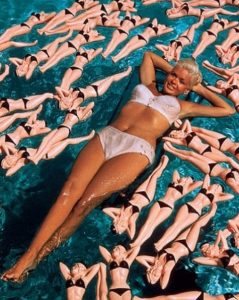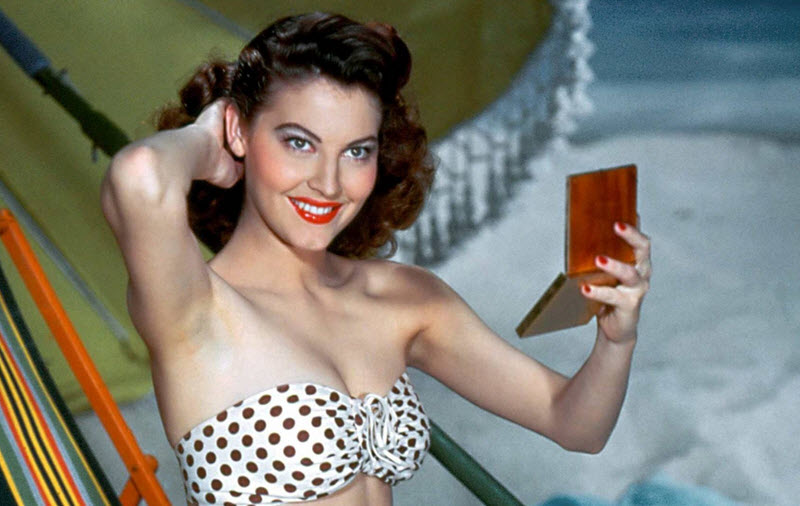One thing can be said for the pin-up pictures: they have always managed to stir controversy.

Is it an art form celebrating idealized beauty or is it an art form of heathen idolatry combined with horrible smuttiness?
Is it genuinely fun, flirty and essentially innocent, or is it hiding something more sinister behind the surface?
Is it a form of commercialization and exploitation of human sexuality, or is it a brave freedom fighter in the war against harmful sexual repression?
Is it mere low-brow mass-production for the plebeians or something worthy of not just academic attention but also appreciation?
Is it a positive post-Victorian rejection of bodily shame or something that sets largely unattainable standards and makes people feel displeased about their own appearance?
Is it something that modern third-wave feminism should reject wholeheartedly, or is it something to embrace, tweak and turn into an expression of subversion and female empowerment?
Opinions vary, and the discussion also tends to take various paths depending on one’s own definition of what actually constitutes pin-up pics, as opposed to, for instance, 1980s lad mag centrefolds or Victorian-era pornographic sepia photos.
About pin-ups
Pin-up pictures are intended for informal display; to be “pinned-up” on a wall, the inside of a locker or similar. The term is especially associated with the 20th century, and the term was first attested in English in 1941, even though the concept itself existed much earlier. In the United States, the 1940s, 1950s and early 1960s are generally seen as the heydays of the pinup picture.

The term pin-up is used for both photographs, paintings, lithographs, drawings and other forms of illustrations. Historically, pin-up pictures have often been cut out of magazines, further emphasizing their informal and affordable characteristics. Movie studios, especially in Hollywood, would also print and distribute pin-up posters and pin-up cards as promotional material; either for a specific movie or for the general promotion of movie stars who had long-term contracts with the studio.
Throughout the 20th century, a vast majority of the pin-up pics featured females, but male pin-up models also existed, including famous Hollywood heart-throbs such as James Dean and Rock Hudson.
Although many pin-up pics depicted celebrities, such as film stars or celebrated singers, there was also a wide range of more anonymous pin-up pics produced throughout the century – both male and female. Examples of influential artists to helped create the “pin-up style” are George Petty, Alberto Vargas, and Gil Elvgren.
Today, in the 21st century, the term pin-up is often reserved for pics – old or new ones – taken in a style typical of the 1940s to early 1960s era. Examples of famous trend-setting pin-up models from this era who contributed to the various styles are Rita Hayworth, Marilyn Monroe, Eartha Kitt, Dorothy Dandridge, and Bettie Page.
In some contexts, the term pin-up is used in a much broader sense. Millions of walls around the world were once adorned with a pinned-up picture of Farrah Fawcett wearing a red swimsuit during the second half of the 1970s, making her a true pin-up model even though she falls outside the Golden Pin-up Era that ended in the early 1960s.

Background
The history of surrounding oneself with two-dimensional or three-dimensional depictions of attractive humans representing idealized beauty is a long one.
Venus of Hohle Fels is an Upper Paleolithic Venus figurine that was carved from the tusk of a woolly mammoth some 35,000 to 40,000 years ago. This busty, but headless, female is the earliest known, undisputed example of a depiction of a human in the history of mankind, and the depiction can’t exactly be described as coy.
Pin-up pics as we know them today have a direct lineage to the small photographs used as advertisements by 19th-century burlesque performers to promote themselves and their productions. These little cards could be picked up backstage in the theatre’s green room and were frequently pinned-up or stuck into the frames of mirrors or the joints of gas-burners.
In the early 20th century, the tradition of using easily pinned-up little cards featuring the star or stars of the show as promotion material was adopted by the budding movie industry.
